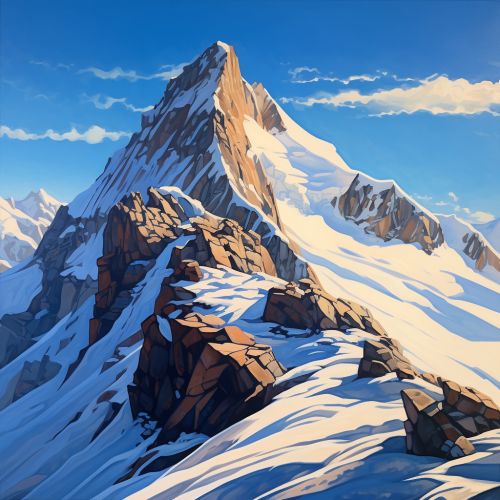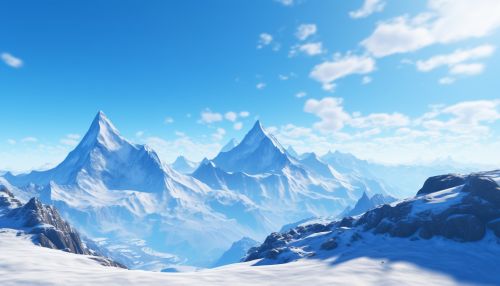Mountain summits
Introduction
A mountain summit is the highest point or apex of a mountain or hill. Summits are typically named for their geographic or historical features, and they are often the destination of hiking and mountaineering expeditions. The study of these high points, their geology, and the ecosystems that surround them is a significant part of both physical geography and outdoor recreation.
Geology of Mountain Summits
Mountain summits are formed through a variety of geological processes. These include tectonic forces such as the collision of continental plates, volcanic activity, and the erosion of existing landforms by weather and glaciers. The specific geological processes at work can greatly influence the shape and character of a summit.
Tectonic Formation
Many of the world's highest mountain summits, including those in the Himalayas and the Andes, were formed by the collision of tectonic plates. When two continental plates collide, the pressure can cause the crust to buckle and fold, creating mountain ranges. This process, known as orogeny, can take millions of years and is still ongoing in many parts of the world.
Volcanic Formation
Volcanic activity can also create mountain summits. When magma from the Earth's mantle rises to the surface, it can build up over time to form a mountain. The summit of a volcanic mountain is often a crater or caldera, formed by the collapse of the land after an eruption. Examples of volcanic summits include Mount Fuji in Japan and Mount Kilimanjaro in Tanzania.
Erosional Formation
Erosion by wind, water, and ice can also create mountain summits. Over time, these forces can wear away at a mountain range, carving out peaks and valleys. The highest points that remain are the summits. This process can create dramatic landscapes, such as the jagged peaks of the Rocky Mountains.


Climatic Conditions at Mountain Summits
The climate at mountain summits is often harsh and inhospitable. Temperatures can be extremely cold, especially at high altitudes, and the air is often thin, making it difficult to breathe. Despite these challenges, many species of plants and animals have adapted to life at high altitudes.
Temperature and Weather
Mountain summits are often subject to extreme weather conditions. Temperatures can drop below freezing, even in summer, and the weather can change rapidly. Storms are common, and the risk of avalanches and landslides can be high. Despite these harsh conditions, many mountaineers are drawn to the challenge of reaching a summit.
Flora and Fauna
Despite the harsh conditions, many species of plants and animals have adapted to life at high altitudes. These species, known as alpine flora and fauna, have developed a variety of strategies to survive in the thin air and cold temperatures. Alpine plants are often small and hardy, with adaptations such as deep roots and hairy leaves to protect against the cold. Alpine animals, including species of birds, mammals, and insects, also have adaptations for high-altitude life, such as increased lung capacity and thick fur or feathers.
Mountain Summits and Human Activity
Mountain summits have long been the focus of human activity, from religious and cultural practices to recreational pursuits like hiking and mountaineering.
Religious and Cultural Significance
In many cultures, mountain summits have significant religious and cultural value. They are often seen as sacred places, and many have been the sites of religious rituals and ceremonies. For example, the ancient Greeks believed that their gods lived on Mount Olympus, while many Native American tribes have stories and traditions associated with specific mountain peaks.
Recreational Activities
Mountain summits are also popular destinations for recreational activities. Hiking, mountaineering, and rock climbing are all activities that often involve reaching a mountain summit. These activities require physical fitness and technical skills, and they can be dangerous due to the harsh conditions and potential for accidents. However, for many people, the challenge and the stunning views from a mountain summit make the risks worthwhile.
